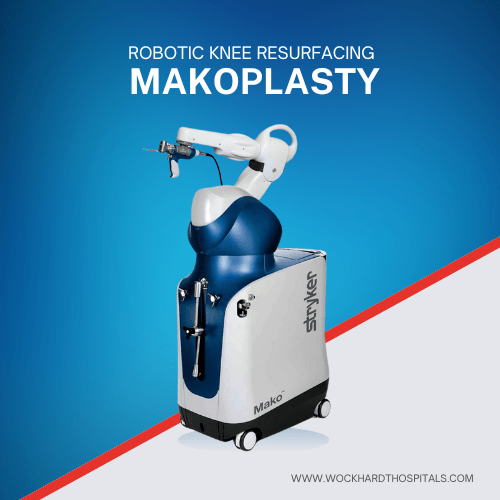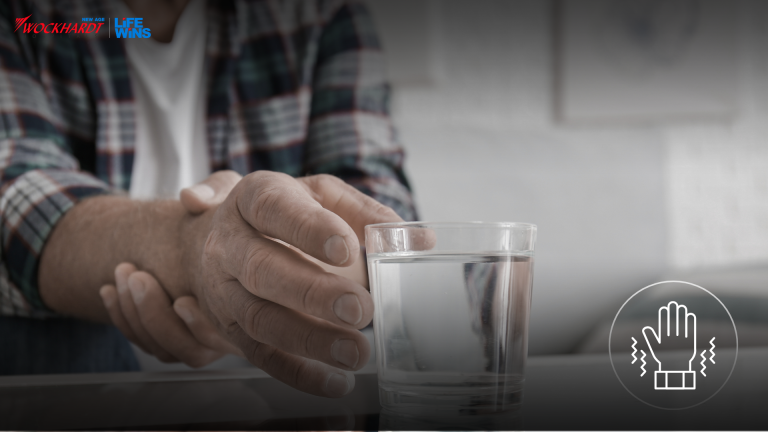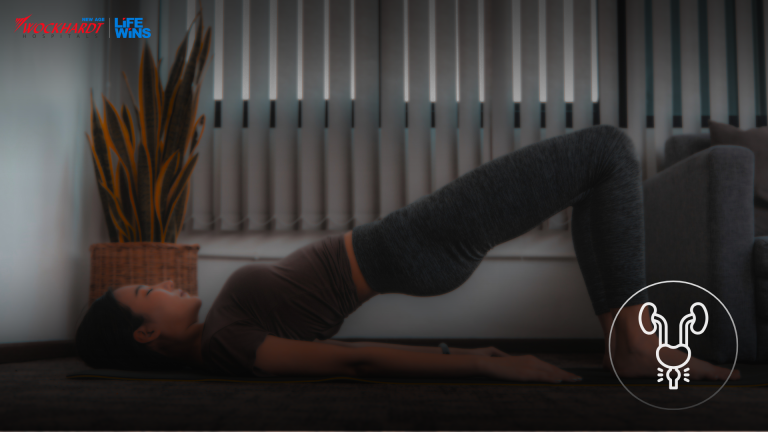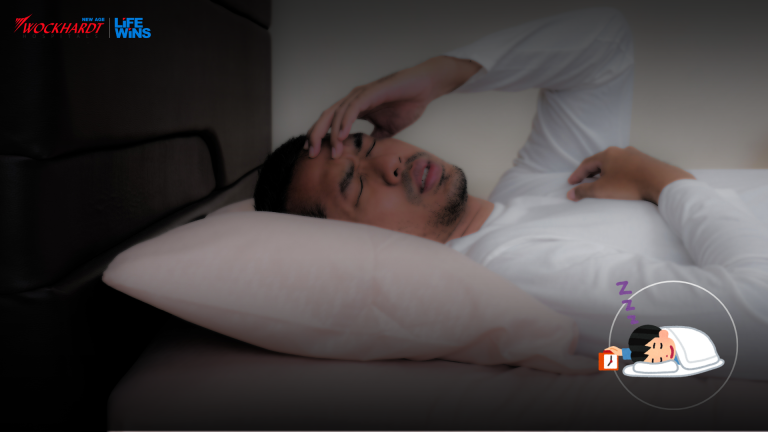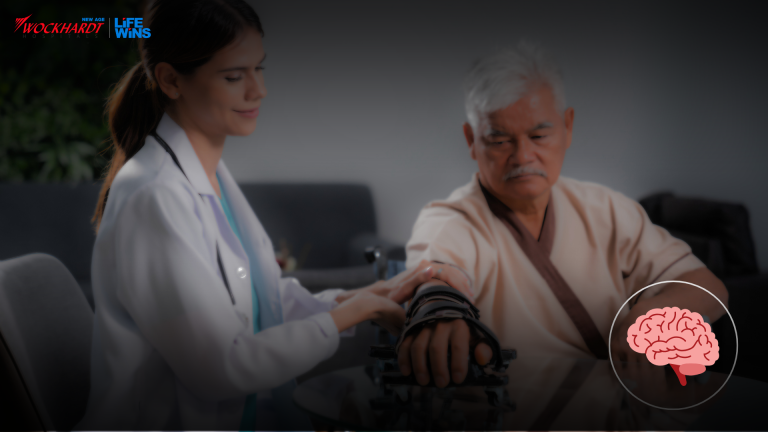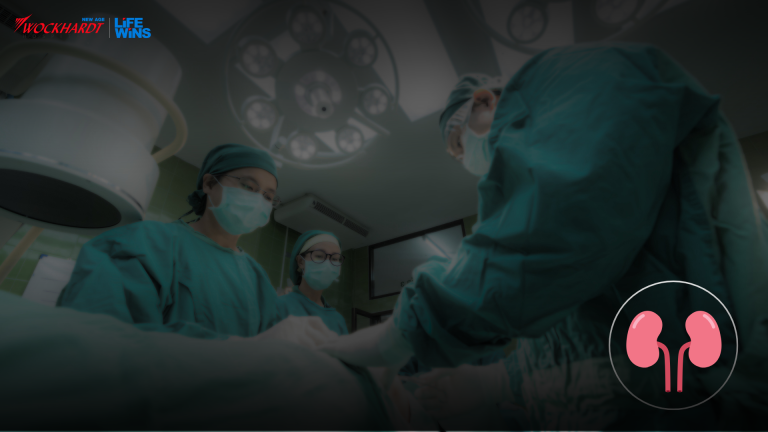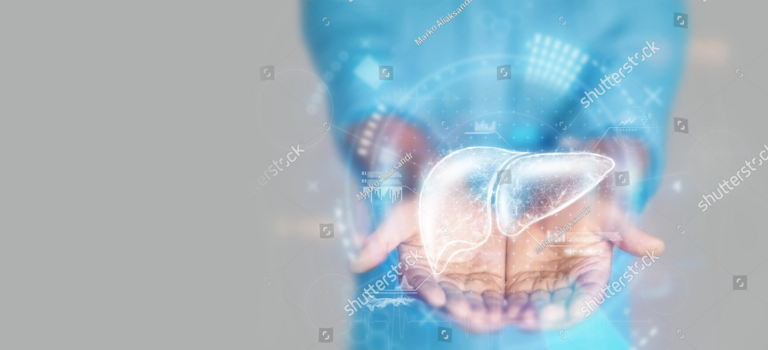Thyroid Diseases, Symptoms, Causes & Treatment
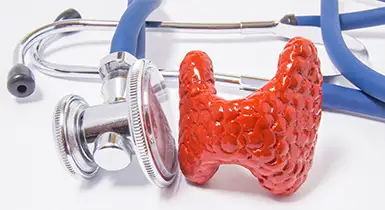
The thyroid gland is a tiny gland but performs numerous functions. It is Butterfly-shaped structure; located in front of your windpipe (trachea) below the thyroid cartilage. The main function of the thyroid gland is to produce and releases hormones that regulate metabolism, heart function, digestion, muscle control, bone strength, energy levels, and even mental states. In women thyroid diseases are very common and are generally overlooked. Thyroid diseases are more prevalent right after pregnancy or menopause, a time when your body is adjusting to so many changes. Thyroid problems can cause severe heart problems, stroke, brittle bones, loss of consciousness, or other serious health problems. Therefore it is essential that it is important to get a thyroid screening (blood test) to know and assess whether the thyroid gland is functioning optimally or not. The two most common conditions of the thyroid gland are: Symptoms vary accordingly in both conditions: Hypothyroidism Hyperthyroidism Weight gain Weight loss Slowed heart rate Increased heart rate, blood pressure and heart palpitations Tired or sluggish Anxiety Hair loss Insomnia Feeling cold more often than usual Restlessness Dry skin Irritability Brittle nails Hair loss Numbness or tingling in the hands Excessive sweating and an aversion to heat Constipation Muscle weakness or trembling hands Abnormal menstrual periods Vision problems Diarrhoea Irregular menstrual periods Thyroid disorders are assessed easily via blood test, and can usually be treated effectively with medication and/or a dietary regimen. In rare cases, surgery may be indicated. At Wockhardt Hospital, our team of endocrinologists diagnose and treat patients with thyroid disorders including hypothyroidism, hyperthyroidism, thyroid nodules and thyroid cancer. The goals established for treatment of Thyroid treatment basically involve At Wockhardt Hospital, our endocrinology department is supported by state of the art diagnostic services. The clinic carries out a complete thyroid profile, ultrasound, fine needle aspiration cytology, isotope scanning, radio-iodine treatment and surgery. If you have any of the above symptoms, please visit out Endocrinology department at Wockhardt Hospital for a proper evaluation and treatment.
Winter Diseases: Much awaited winter its highs and lows

Winter is almost approaching India and it’s the time to take out the warm woollies and enjoy endless cups variety of soups, ginger tea and coffee brews. It’s a much required break from the hot months and there sense of holiday cheer in the air. However for many the winter season not only brings pleasant weather brings but is a precursor to illness and diseases as the temperature drops. . During winters, the body heat usually experiences a drop as the environment cools. At the same time, the body is adjusting to the new climate. As a result, the change in the process is demonstrated through a number of diseases. Adults as well as children are very susceptible to the change in climate. Children especially end to be more absent from school and are more prone to catch a lot of winter related diseases as their immunity is still developing. During these months we are susceptible to diseases and should know how to manage ourselves better. Most of these diseases affect both adults and children. Colds and Flu: In the winter, when temperatures begin to fall, the body naturally begins to work in overdrive to regulate the normal body temperature. Many individuals suffer from bacterial or viral induced cold and flu symptoms resulting from a drop in immunity. Wearing a variety of warm clothes will help your body regulate the body temperature and reduce the chances of catching colds. Flu, also known as Influenza generally gets transmitted through the air in the environment. Yet, keeping yourself shielded from chilling winds is always helpful. Vitamin C can also be very helpful along with warm drinks. Children are very prone in catching colds and cough. It is better that they properly dressed warmly and avoid playing outside in later part of the day. Coughs and Croup: Winter also brings with it a lot of dust, dryness and cold winds. This adds to cough symptoms. Having warm beverages of extreme temperatures also triggers a throat infection. Always wear a helmet or use scarves to protect yourself from the dust while rising two wheelers. You may wake up in the middle of the night to hear your child coughing loudly. The croup cough often is described as “barking” or “like a seal”. Children with mild and moderate croup can usually be easily treated in the ER with nebulized treatments and steroids. Throat Infection: Symptoms start with painful, itchy and scratchy throat that makes us uncomfortable. Most throat infections are a result of a persisting infection or some environmental factors, such as dry air. Gargling, rest, and avoiding cold items will help. Acute Ear Infection – This leads to ear pain, blocked ears, itchy Ears. Excessive cold may result into an acute ear infection. Another cause of bacterial ear infection is due to moisture in the ear. An ear infection can occur even overnight, so it is best to identify it at the earliest. Seen not only in adults but also children. Tonsil Infection – Tonsillitis is a condition where there is an inflammation of the tonsils with severe pain in the throat, enlarged tonsils and the child is unable to gulp food or liquids. Eating anything cold may trigger this or even a virus or bacteria in the air can cause it. Avoid feeding your child anything cold when the weather is cold. Stomach Flu: When your immune system becomes weak, your body faces difficulty in fighting against the effects of bacteria. The most common symptoms of stomach infection include vomiting, excessive thirst, green stool, fever, diarrhoea, loss of appetite and pain the abdominal area. It’s a self-treatable ailment and does not require any specific course of treatment. Both adults and children are very prone. Itchy dry skin: A lot of people with sensitive skin develop itchy during winter due to the dryness. The best way to take care of this is by applying coconut, olive or almond oil every night. . Eczema and psoriasis can worsen during winters. Respiratory ailments: The main source of infection is inhaling droplets with the concerned organism exhaled by already infected cases are sources of infection or low immunity causing respiratory distress. The cold and dry air leads to tightening of airways and makes it even worse while breathing As a result, individuals suffering from respiratory conditions, such as asthma or COPD, may find it increasingly difficult to breathe during extreme cold temperatures and conditions worsen. To negate this effect, when venturing into the outdoors, layering the face and chest in warm clothing and scarves will help. In children Bronchiolitis and pneumonia are common respiratory infection observed. Heart Attacks: Winters is one of the prime seasons for heart attacks. As the temperature falls, the arteries become constricted making it difficult for the heart to pump the blood. Cardiologists suggest, people over the age of 30 should avoid exhausting themselves in winter season. Also, do not overeat food during winters and preferably eat in small quantities. Joint Pain: Flaring up of joint pains or increased pain in those who are having pre-existing joint conditions (arthritis) is seen quiet commonly in winter months. One of the most common remedies to get relief from joint pains is keeping yourselves and your feet warm. Also, wear two or three pairs of thin clothing instead of one pair of heavy warm clothes. Exercising is another way to get rid of all joint and muscle stiffness during winter time without overdoing it. Basking in the sun is also a great way to get rid of the joint aches. Eating healthy, including foods containing omega-3-fatty acids, vitamin C &K rich foods in your diet helps preventing joint pain. Massaging the joints can reduce joint pain. The best tips would be to keep warm, do small exercises, take medications, Eat freshly cooked food preferably warm and rest. In case you are experiencing any of signs or symptoms and need treatment or would like to know please contact our centres at Wockhardt Hospitals. Wockhardt Hospitals is
Paediatric and Neonatology Services at Wockhardt Hospital
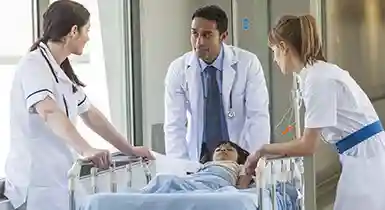
The Department of Paediatrics and neonatologists at Wockhardt Hospital is a comprehensive clinical department that provides investigative, treatment and emergency services for a whole range of paediatrics and neonatology conditions. It includes all medical, surgical therapeutic and diagnostic and preventive healthcare ensuring an optimal management of your child. Wockhardt is well equipped with all types of neonatal and Paediatric emergencies. Our care continues beyond delivering the bundle of joy. Wockhardt Hospitals’ Paediatric and neonatology care is one of the best in the city, delivered by a team of experts across paediatric neonatology, Paediatric cardiology, paediatric rheumatology, paediatric gastroenterology, paediatric orthopaedics , adolescent care and developmental Paediatrics. Our paediatricians provide an integrated treatment approach for children including outpatient and inpatient services. We specialise in managing high risk children successfully. Our PICU is fully equipped to handle serious illnesses and trauma cases and is in accordance with super speciality team of doctors. Our neonatology department at our unit treats the various conditions that may arise after delivery of a new born such as Birth asphyxia and Respiratory Distress Syndrome, Congenital heart disease and Congenital anomalies (birth defects) Infectious diseases such as pneumonia, Respiratory Distress and Assessment and treatment of Neonatal seizures, jaundice, as well as of extremely premature and low birth weight babies. Our NICU is equipped with incubators including transport incubators, invasive and non-invasive ventilators, high frequency ventilator, phototherapy units, bili-blankets, multipara monitors, invasive blood pressure monitors, etc. We, provide Exchange transfusion, CPAP Care Extra-corporeal membrane oxygenation (ECMO) or Extra-corporeal Life Support (ECLS) for severe respiratory failure, and congenital heart disease. Our unit is headed by highly experienced neonatologists who manage critically new born 24*7 requiring constant monitoring and multidisciplinary management. Our services range from incubatory support, ventilators, phototherapy, surfactant administration, parenteral nutrition , and exchange transfusion all under one roof. The back bone of our child care services is compassionate nursing care who is experienced in managing all types of cases. At our units we follow a mother centric approach which provides counselling at every stage, to help understand your child’s needs and underlying conditions. For any further advices and treatment please our Paediatric and Neonatology department at Wockhardt Hospital.
Good Eating Habits can go along way to improve Child’s Health

School age is the perfect time for children to learn about healthy food, bodies and activity. Children need a wide variety of foods for a well-balanced diet. The amount of physical activity they have in a day will be an important part of how much they need to eat. When children are busy and active, snacking is important to keep energy levels high. Decline in physical activity, coupled with eating too much, too often is the simple explanation for the rise in childhood obesity. Prevention is easier than cure, so here so it is important to inculcate correct eating habits to you raise healthy children, for life. Healthful eating has many benefits for children such as: Some helpful tips those are essential: For further advice on nutrition for children contact our Paediatric and Neonatology services at Wockhardt Hospital.
All you need to Know about Swine Flu this Winter
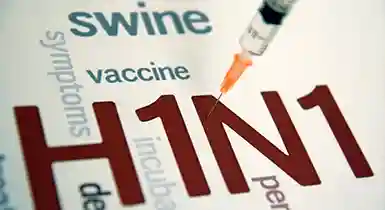
The country has registered 6,803 swine-flu cases so far in 2018. Last year, 2,270 people had died due to the H1N1 infections So far this year, with Maharashtra alone accounting for almost 50% of the cases followed by Gujarat and Delhi. Role of Oseltamivir in Treatment of Swine Flu: Role of Flu Vaccine in Prevention: Precautionary Measures against Swine Flu: In case there is a breakout of Swine Flu in your area please observe with influenza-like symptoms, including fever, body aches, runny nose, sore throat, nausea, Difficulty breathing or shortness of breath, Sudden dizziness, or vomiting or diarrhoea, consult the doctor. In children if there is difficulty in breathing, irritability, bluish discoloration of skin and reduced activity please contact the emergency department at the hospital. For medical management and treatment of Swine flu and its complications please contact Wockhardt Hospital.
Management of Burns in Fire Cracker Injuries

Most common injury and accident during Diwali season mostly seen whilst lighting fire crackers. Burns is damage to the skin caused by contact with dry heat. It may be caused by fire, flames, steam, hot liquids, hot metal, sunlight, electricity or chemicals. The degree of burn varies: (I) First Degree (Superficial) – Involves only top layer of the skin and is red and dry and the burn is generally painful. The area may swell. Most burns are first degree burns. (II) Second degree (Partial – Thickness) – Involves both the epidermis and dermis. The area is red and blisters may open and weep fluid, making the skin appear wet. These types of burns are usually painful and the area often swells. (III) Third Degree (Full Thickness) – Destroys both the layers of the skin with muscles, bones, blood vessels and nerves. These burns may look brown or charred with tissues underneath sometimes appearing white. DOS: Don’ts
Make your Diwali a Safe & Joyful one

Have a safe and joyful Diwali
World COPD Day: 20 November, 2024
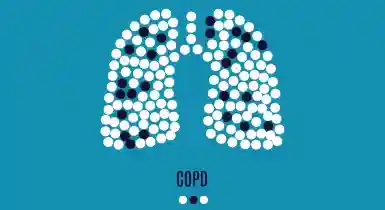
“Chronic obstructive pulmonary disease (COPD) is affecting 251 million lives globally and it causes 3.15 million deaths per year.” COPD, or chronic obstructive pulmonary disease, is the name used to describe a number of conditions affecting the lungs including emphysema and chronic bronchitis. Chronic obstructive pulmonary disease (COPD) is a leading cause of morbidity and mortality worldwide. It is projected to rank third among all causes of death by 2024. When smoke and other pollutants enter the lungs, the cilia are often paralyzed or destroyed. This causes airways to become swollen and narrowed. Over time, lungs with Chronic Obstructive Pulmonary Disease lose their elasticity, get big and floppy, and make it hard for to breathe and release air. Tobacco smoking has been recognized as the most important risk factor for chronic obstructive pulmonary disease (COPD) for a long time, but recent studies have shown that non-smokers also contribute to a significant proportion of COPD. Multiple risk factors other than smoking also play a major role in the development of COPD, particularly exposure to biomass smoke, treated pulmonary tuberculosis, and long-standing asthma. In India, air pollution and other environmental risk factors are also leading causes of COPD. A study recently published in the Environmental Performance Index in which India ranked the fourth worst country in the world. Initial Symptoms: Progressive Symptoms: To understand treatment and management of COPD disorders please contact Wockhardt Hospital. The Department of Respiratory Medicine provides world-class service in the diagnosis and management of various Respiratory Diseases like COPD, Asthma, Pneumonia, Interstitial Lung Disease, Lung Cancer, Tuberculosis, and Sleep-Related Breathing Disorders. The Department boasts of a state-of-the-art Pulmonary Function Testing Lab for comprehensive lung function testing and a fully equipped Bronchoscopy unit for complex endobronchial diagnostic and therapeutic procedures.
World Osteoporosis Day: 20 October, 2024
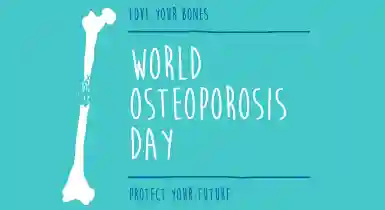
World Osteoporosis Day is observed annually on 20 October, all across the globe. Osteoporosis Day is dedicated to raising global awareness of the prevention, diagnosis, and treatment of metabolic bone disease and osteoporosis. Every year the day is followed by a specific theme and this year the theme is ‘LOVE YOUR BONES: Protect your future’. What is World Osteoporosis Day? Osteoporosis is referred to as thinning bones; it can result in painful fractures. Risk factors associated with osteoporosis include aging, being female, low body weight, low sex hormones or menopause, smoking, and some medications. People with osteoporosis are at a high risk of fractures, or bone breaks while doing routine activities such as standing or walking. Osteoporosis generally affects the ribs, hips, and the bones in the wrists and spine. The early stages of osteoporosis don’t cause any symptoms or warning signs. In most cases, people with osteoporosis don’t know they have the condition until they have a fracture. Receding gums, weakened grip strength, weak and brittle nails,s and Pain in joints. This test called bone densitometry, or dual-energy X-ray absorptiometry (DEXA) is used to detect osteoporosis. It uses X-rays to measure the density of the bones in your wrists, hips, or spine. These are the three areas most at risk of osteoporosis. Facts on Osteoporosis: Tips to Prevent Osteoporosis: This year’s World Osteoporosis Day campaign theme is “Love your Bones,” which reminds everyone to help prevent osteoporosis by following three easy steps:
World Stroke Day 29th October : Up Again After Stroke
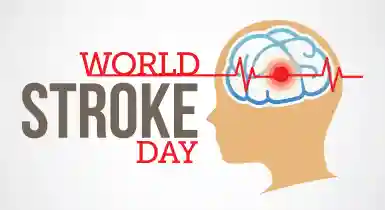
Stroke is a leading cause of death and disability globally. On World Stroke Day, the world’s attention is namely the resilience of patients and care givers and their capacity to build on the things that stroke can’t take away; their determination to keep going on the recovery journey. Stroke occurs when the blood supply to part of the brain is cut off. Without blood, brain cells can be damaged or die. Depending on which part of the brain is affected and how quickly the person is treated, the effects of stroke on survivors can be devastating to a person’s body, mobility and speech, as well as how they think and feel. STROKE IDENTFICATION: F – FACE: Sudden change in facial expression A – ARM: Sudden change in arm or leg function S – SPEECH: Sudden change in speech T – TIME: Rush to a proper hospital with stroke care facilities in time Wockhardt hospitals would like to share some recent advances in treatment and management of stoke cases: Neuro medical intervention emergency interventions at Wockhardt Hospitals saved a life and improved patient’s condition” A 40 year old patient came to the Wockhardt Hospitals, Mumbai Central in a serious condition, he was not able to speak and had weakness in the limbs. The emergency medical team, adopted the Code White protocol Code White’ which is a metaphoric alert button pushed by a team of five doctors and 16 nurses in the hospital’s emergency section. As part of the protocol in neurological emergencies, a brain resuscitation team reached the emergency room within 5 minutes and within 15 minutes; an MRI was done for a conclusive diagnosis. This resuscitation was critical for the patient and he was rushed to remove the clot in his brain. The protocol is established by Dr Shirish Hastak a very experienced neurologist and stroke expert at Wockhardt Hospitals, Mumbai central. The brain resuscitation neurological emergency is first of its kind in India. The practise is very beneficial in saving many lives and reduces the chance of the stroke progressing in many cases. The patient miraculously recovered and a permanent stroke was averted for the patient. The patient was grateful to Wockhardt Hospitals emergency services and Dr Hastak for his diligence and advancement in medical services at the facility. The patient underwent rehabilitation at the hospital and showed good progress thanks to the doctors, relatives and patients will to recover. Benefits of stroke rehabilitation care given shows fantastic progress of recovery of stroke patient Mohan Shamim developed a stroke which progressed to having difficulty in speaking and weakness of lower legs. As part of the stroke rehab program through Melodic intonation therapy, Mohan was able to express his thoughts through song, (music) as his right side was damaged .This is part of the speech therapy program that encourages stoke patient to express themselves through song or music rhythm. Dr Shirsih Hastak who specialises in neurology and stroke expressed his full support in Mohan’s treatment post his stroke and rehabilitation progress. Mohan showed tremendous strength during his rehabilitation process with encouragement from doctors and staff at the hospital. His condition has improved. Neurology Services at Wockhardt Hospitals: The Neurosciences department at Wockhardt Hospitals is well-equipped to take care of patients with complex neurological and neurosurgical problems. Our multidisciplinary team of specialists work together to provide advanced care featuring minimally invasive procedures for stroke, aneurysm and other conditions of the brain like Epilepsy management, Migraine , Memory loss/ Dementia evaluation and treatment, Peripheral neuropathy and Botox- for Spasticity/ Hemi facial spasms. Our multidisciplinary team approach enables our neurologists to work closely with cardiovascular surgeons, orthopaedic surgeons, ophthalmologists and neurosurgeons for management of stoke cases. The neuro- rehabilitation centre at our hospital provides an optimal environment for recovery, functional improvement, reduction in secondary complications, impairments & disability, teaching compensatory strategies, appropriate equipment & modifications and continuity of care. Services such as Speech & Language Therapy, Swallow Therapy, Gait & Balance training and Strength & Endurance training are provided by full-time Physical Therapists trained specially in the art of rehabilitation. Wockhardt Hospitals has state-of-the-art infrastructure. Our prime objective is patient safety and quality of care at all levels. The guiding philosophy is to serve and enrich the Quality of Life of patients and to make life win. Sudden Cardiac arrest and Cardiac Pulmonary Resuscitation: Wockhardt Hospital, Rajkot in its ongoing endeavour to promote cardiac awareness recently carried out a live demonstration on emergency intervention for first aid in cardiac arrest. Emergency medical doctors and staff showed the techniques of a lifesaving procedure called CPR to patients and relatives at the hospital. Let us understand what is cardiac arrest, how to identify the same and CPR administration. Cardiac arrest is defined as the sudden or abrupt loss of heart function. Sudden cardiac arrest is a life-threatening event that can lead to death, if left untreated or poorly managed If you observe anyone experiencing a “crushing,” chest pain in the centre or left side of your chest and severe shortness of breath at rest or a sudden loss of consciousness while exerting, the possibility is that one could be having a sudden cardiac arrest. One of the main causes of cardiac arrest is due coronary artery disease which is the most common condition. The main reason of sudden cardiac arrest is believed to be irregular rhythmic activity in the heart, triggered by lack of blood flow to the heart or damaged impaired heart muscle. Symptoms of cardiac arrest: Symptoms of cardiac arrest differ from men and women accordingly men tend to have more chest pain and women have more shortness of breath, light Headedness, and dizziness. CARDIAC PULMONARY RESUSCITATION: Emergency medical Treatment is vital when you are experiencing cardiac arrest: Emergency medical treatment is the crux of saving your life, therefore it is extremely vital to recognize the above warning signs and symptoms and seek timely medical assistance. At home of aspirin orally and dialling emergency medical services would be highly recommended. Emergency medical treatment for cardiac arrest at a hospital or in an ambulance






